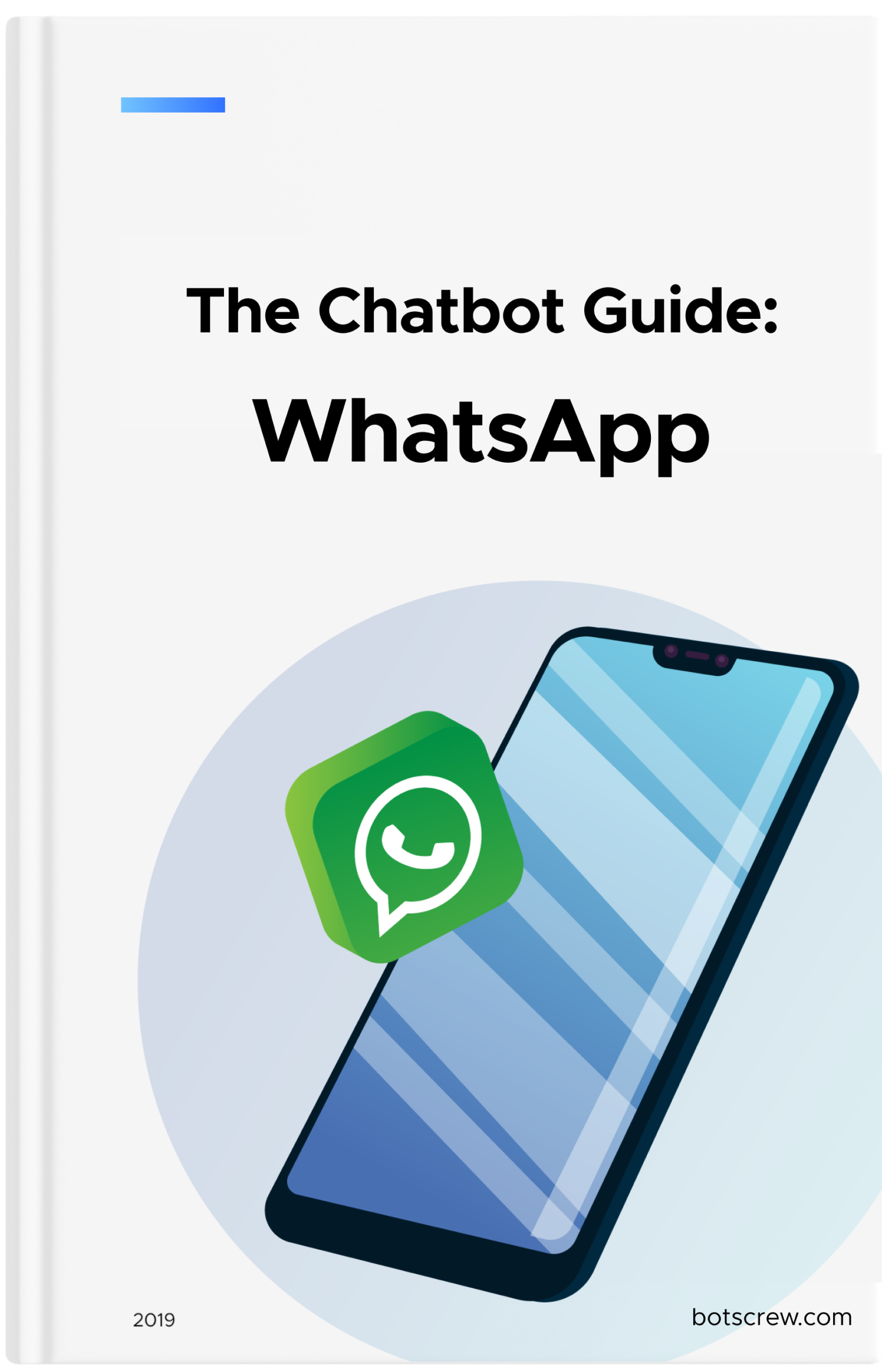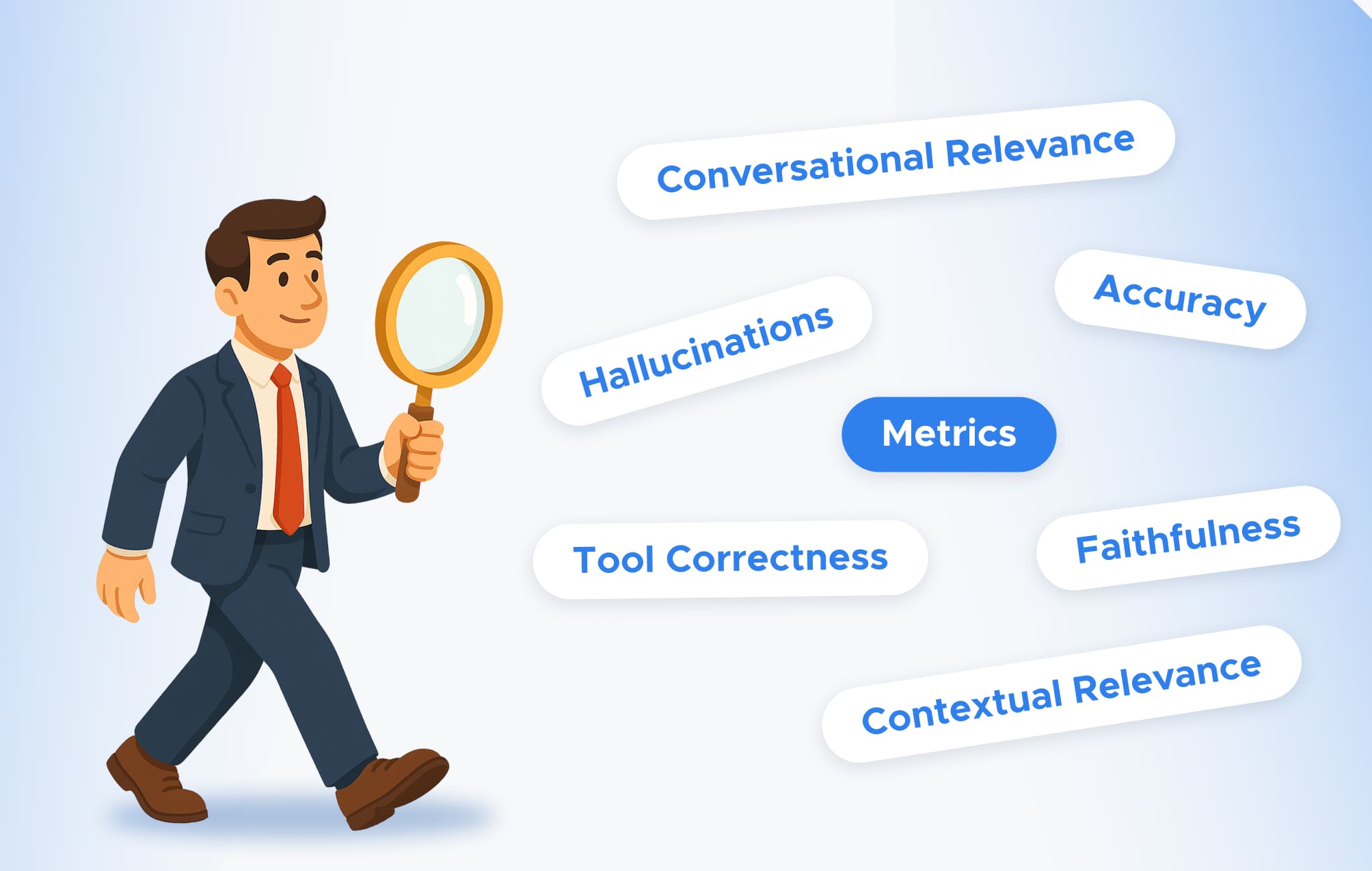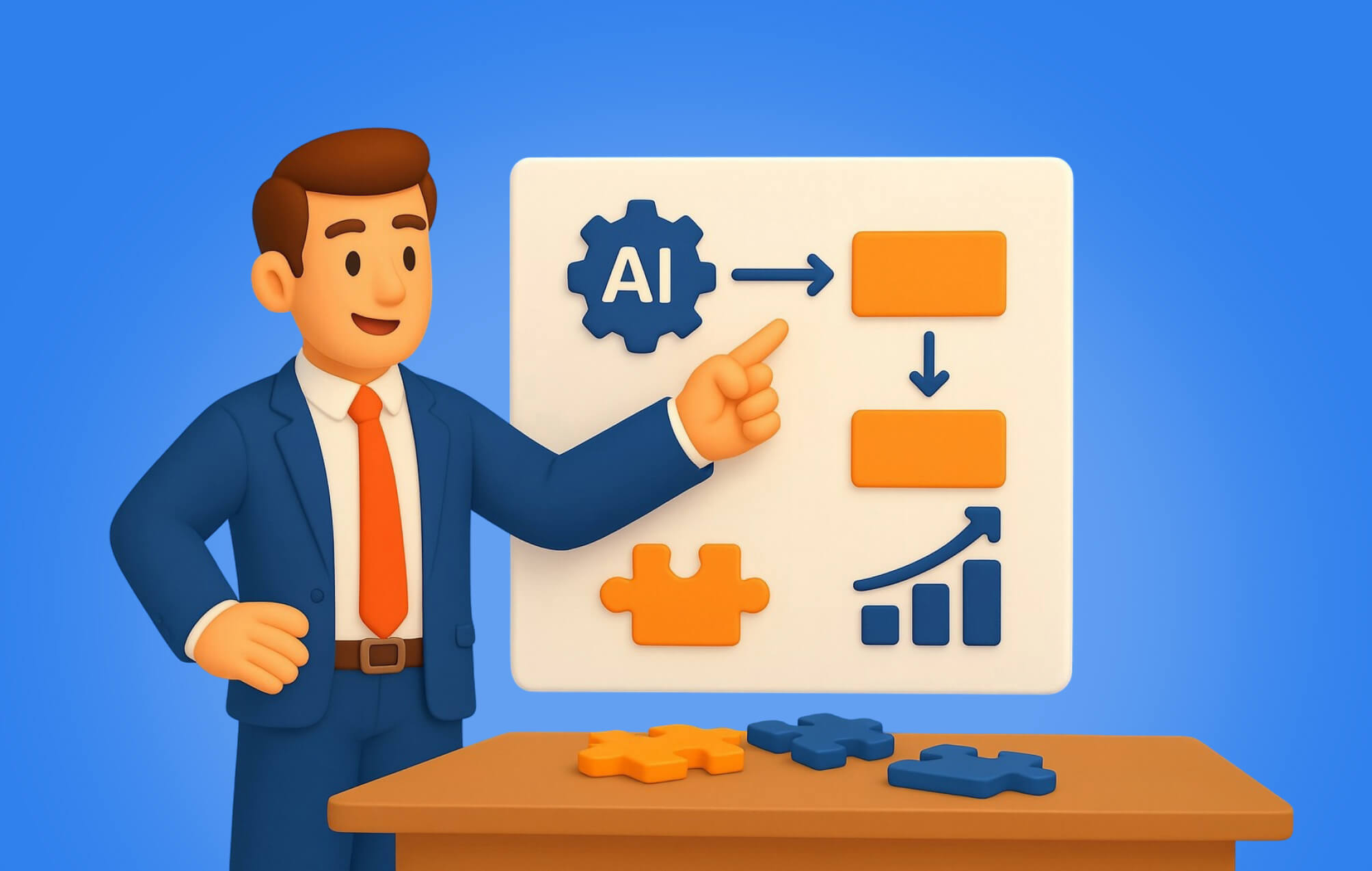AI Use Case Evaluation Framework: How to Avoid Wasting Resources
Many companies find it challenging to choose the right AI agent use cases. They either get distracted by flashy demos or sink resources into low-impact projects. Here's a simple AI use case evaluation framework to help your business focus on initiatives that drive real results and measurable ROI.
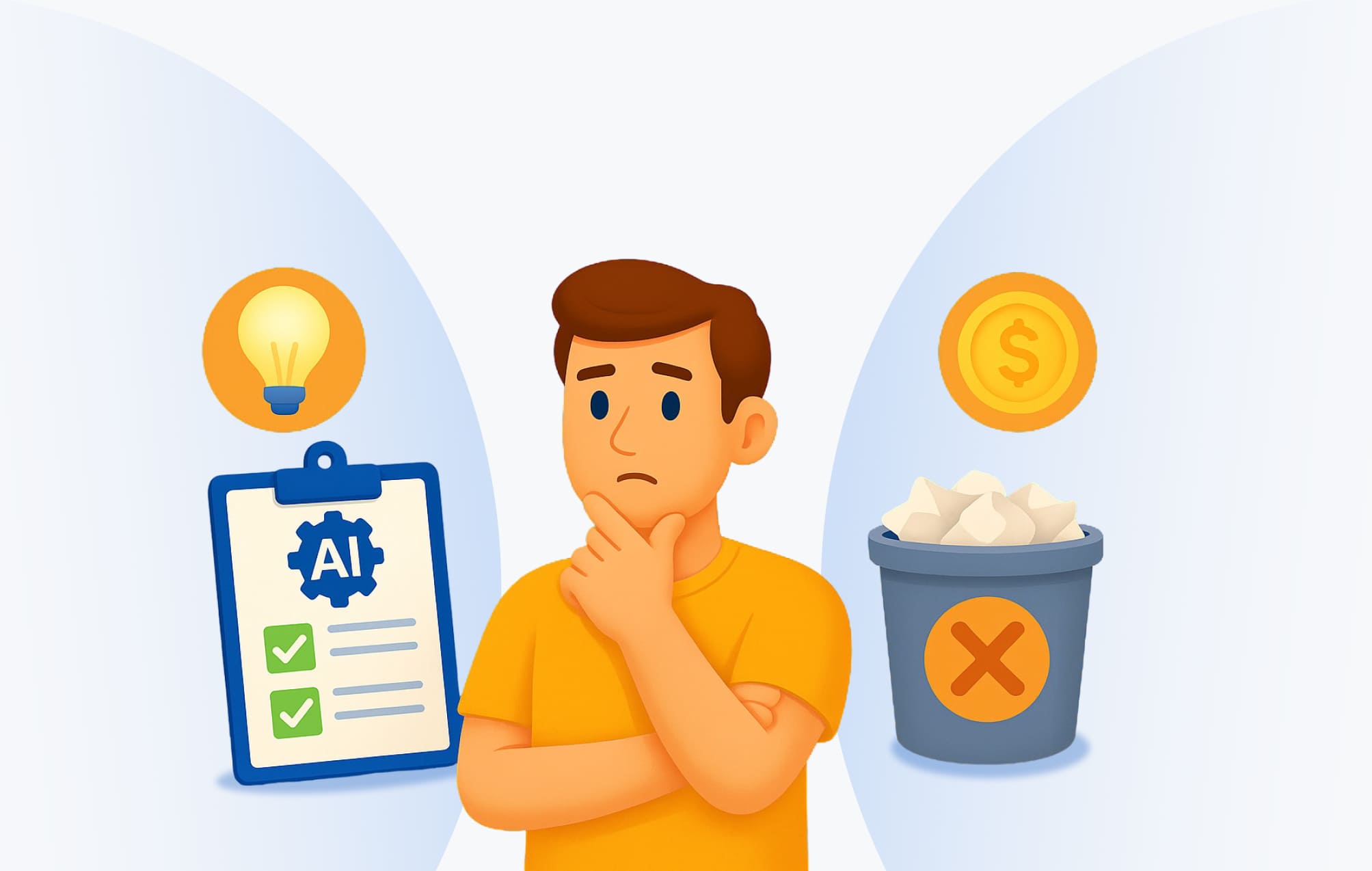
Between 2025 and 2028, 92% of businesses plan to ramp up their AI investments — even after pouring substantial funds into the technology over the past two years. Yet there is a gap between ambition and execution. Most executives agree that AI represents a significant strategic opportunity, but only 1 in 4 has integrated AI into their offerings or operations in any meaningful way. And just 1 in 20 has gone so far as to make AI a core element of their business.
This sluggish progress often comes down to one issue: ROI. According to Gartner, half of AI adopters admit they struggle to measure the value their initiatives deliver. While AI has the potential to transform businesses, the impact — and the returns — will ultimately hinge on how effectively leaders can identify and rapidly validate the proper use cases.
In this blog post, we'll explore a practical AI use case evaluation framework to bridge the gap between AI ambition and real business impact. You'll discover how to identify high-value AI use cases, validate them quickly, and maximize ROI — so your investments translate into measurable results rather than stalled experiments.

The Cost of Getting AI Agent Use Cases Wrong
A razor-sharp AI vision is only the starting point; without the right use case, even the best AI strategy can stall. The hidden costs include:
☹️ Creating resistance to future AI adoption. A failed project can sour leadership on AI entirely, shutting down funding and enthusiasm for future initiatives.
☹️ Burning time and budget. Teams spend months on pilots that never scale, draining budgets and distracting from more impactful opportunities.
☹️ Missing the 6–12 month competitive edge. The AI advantage is perishable. Early movers can build a moat, while latecomers are left playing catch-up.
☹️ Driving away top talent. Skilled AI professionals want to work on meaningful, high-impact problems — repeated dead-ends push them toward competitors.
☹️ Delaying fundamental transformation. Every failed experiment pushes back the timeline for seeing meaningful business results from AI.
Use cases act as the translation layer between high-level ambitions and day-to-day execution. Organizations that approach AI agent use case selection strategically can gain a first-mover advantage within a critical 6–12 month window.
Two Paths to AI Value: Defining Your AI North Star
An AI strategy only creates real value when it aligns with the overall business strategy. That strategy begins with a clear AI vision:
- Product/Service-centric AI to create smarter offerings for customers,
- Process-centric AI to reinvent how work gets done.
The next move is sharpening competitive positioning — how AI will set the company apart. With the vision set, the team begins ideation and AI use case prioritization, generating a wide range of possibilities and ranking them by impact and feasibility. They move on to value chain configuration, pinpointing where AI can create a measurable advantage across operations, supply chains, and customer touchpoints. Then comes the turning point: selecting the proper use case.
The chosen use case will only succeed if key enabling factors are in place:
✅ Organization — a solid structure and strong governance to keep projects focused.
✅ People — the right know-how and talent, supported by a culture of collaboration.
✅ Technology — scalable AI infrastructure and clean, reliable data.
✅ AI Ecosystem — partnerships with companies and other collaborators to speed innovation.
With the vision defined, the use case selected, and foundations secured, the company can move into execution: products launched, processes optimized, and measurable value created.
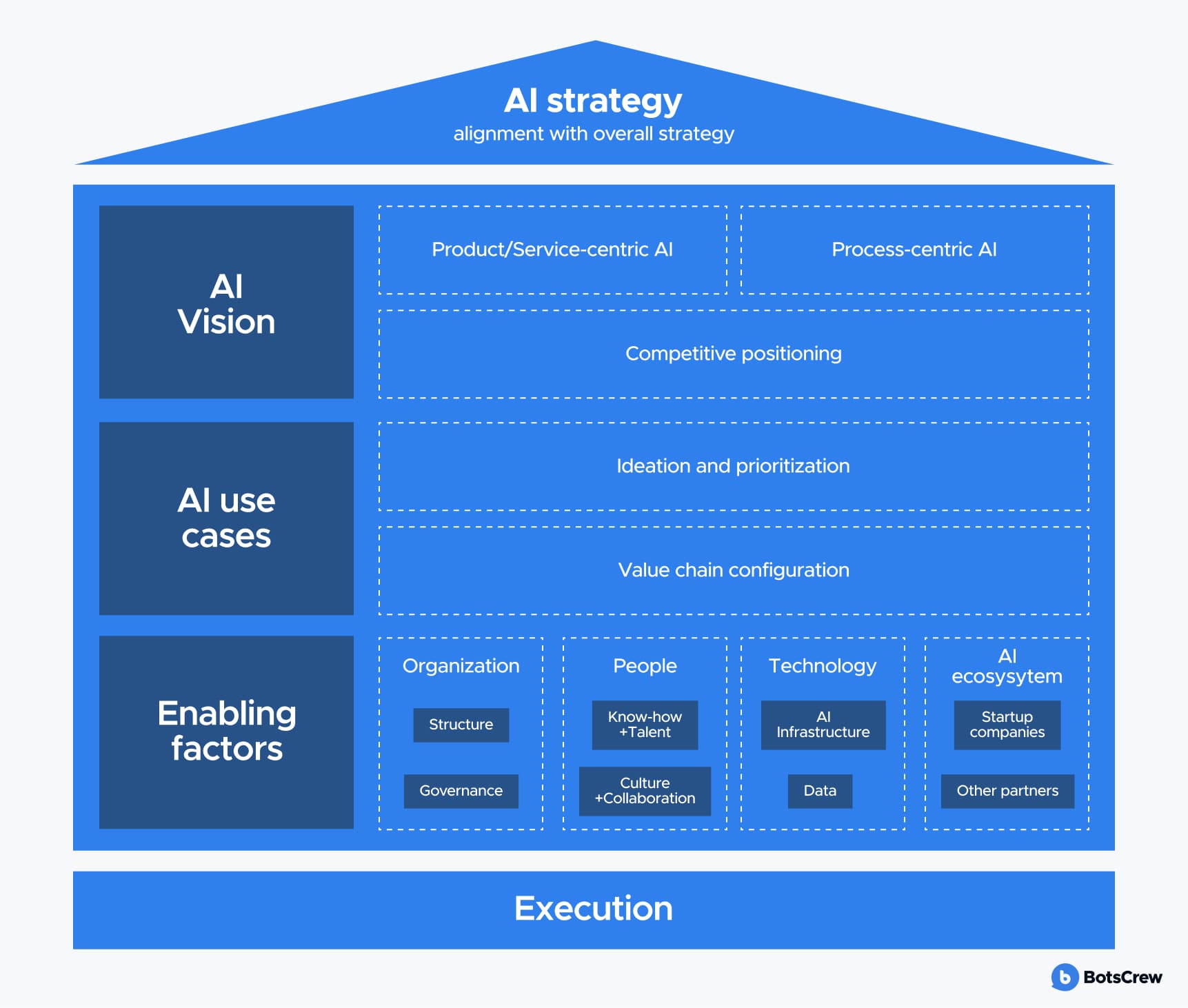
Do You Really Need an AI Agent? The 3-Question Test
Before jumping into AI agent use cases, it's crucial to distinguish real opportunities from projects better suited for traditional automation. Applying this AI use case evaluation framework helps organizations avoid overengineering solutions where simpler approaches would suffice.
#1. Complexity Level
Skip AI agents for: Simple if-then rules, basic automation, or problems that traditional software can handle.
Example: Automatically sending a weekly report from an Excel spreadsheet to your team based on fixed criteria. Traditional workflow automation tools (like Zapier or Microsoft Power Automate) can handle this efficiently — no AI needed.
Use AI agents for: Tasks that require reasoning across multiple inputs, adapting to evolving context, or making nuanced decisions that balance several variables at once.
#2. Data Source Diversity
Skip AI agents for: Single, well-structured data sources — even if large — where traditional processing and analytics tools can efficiently extract insights.
Example: A customer database with standardized fields (name, email, purchase history) that you need to aggregate or report on.
Use AI agents for: Multiple, heterogeneous data sources, combining structured and unstructured information, or data that requires contextual understanding to generate meaningful insights.
Example: Analyzing customer interactions across emails, support tickets, social media, and CRM notes to uncover trends or make recommendations.
#3. Process Type
Skip AI agents for: Repetitive, predictable processes that can be entirely handled by existing software — even if they run frequently.
Example: Generating monthly invoices or processing routine payroll. Standard automation tools can handle this efficiently.
Use AI agents for: Processes that require adaptive decision-making, handle multiple exceptions, or evolve based on context, feedback, or external inputs.
Example: Customer support workflows that need to triage inquiries, prioritize urgent cases, and route tickets differently depending on conversation history and sentiment analysis.
This 3-question test ensures that AI agents are applied where they truly add value, rather than layering complexity onto problems that simpler solutions could solve just as effectively.
For more insights, book a free 30-minute consultation and discover how to identify the right AI opportunities for your organization.
7-Step AI Use Case Evaluation Framework
We've built an AI opportunity assessment framework that helps you avoid low-value AI bets and double down on initiatives that truly move the business forward. Done right, these steps protect ROI, accelerate implementation, and prevent costly missteps down the line.
Step 1: Clarify Your Company's AI Vision
Your company's AI vision defines what areas to focus on to create maximum business value. At this stage, you're not yet deciding what is technically possible — you are defining where AI could make the biggest difference.
Start by choosing your primary focus area:
Process-Centric AI
Focuses on how work gets done. The goal is to streamline operations, reduce costs, and improve speed or accuracy. These use cases typically create internal efficiency and free up human capacity.
Examples include:
— Customer-facing processes: Automating ticket routing in customer service, using chatbots for first-line support, or applying AI to personalize marketing communications.
— Internal operations: Forecasting demand in supply chain, optimizing production schedules, or automating invoice processing.
— Support functions: Enhancing HR with AI-driven candidate screening, enabling finance teams to automate reconciliations, or using predictive analytics in IT for incident prevention.
Process-centric AI is often where companies see quick wins because results (like cost savings or time reductions) are easier to measure.
Product/Service-Centric AI
Focuses on making your offerings themselves smarter. This approach creates differentiation and new value for customers and can become a source of competitive advantage.
Examples include:
— Smart products: Embedding AI in consumer electronics, vehicles, or IoT devices to make them adaptive and autonomous.
— Personalized services: Recommender systems for e-commerce, dynamic pricing engines for travel and retail, or personalized learning experiences in edtech.
— New capabilities: AI-driven fraud detection in fintech, predictive maintenance services in manufacturing, or AI-assisted diagnostics in healthcare.
Product/service-centric AI is often more strategic and long-term, because it impacts your market position and brand perception — but it may require more investment and alignment with your product roadmap.
Keep in mind that AI can be used either to support existing processes or create new ones. According to Google, nearly 4 in 10 executives report a positive ROI from using gen AI to boost productivity, while 37% are seeing gains in customer experience — from smarter chatbots and call centers to better field service support.
And the impact on growth is even clearer: over half (55%) of leaders say gen AI is transforming their marketing, helping them craft campaigns that drive more leads and higher conversion rates.
At this stage, you're building a broad, opportunity-oriented inventory. Don't worry about feasibility or complexity yet — evaluation comes later. This step is about capturing where AI could create meaningful business impact.
Step 2: Define a Top-Down AI Vision
You need a top-down AI vision to define the broad areas where AI could add significant business value. But you also need some use case experience to do this properly.
Since a common trap continues to be teams wasting time on marginal AI application areas, senior business leaders — building on an initial understanding of AI — should make the effort to define and document the key areas where they expect value and why. This may include:
- Specific products and services
- Core processes (supply chain, customer-facing activities)
- Support processes (finance, HR).
This vision serves as a business guideline for the use case ideation process, even if it might be revisited based on experiences gained.
Step 3: Spot Pain Points & Map AI Possibilities
Start by identifying friction points — bottlenecks, inefficiencies, or customer pain points that slow processes or limit growth. Skipping this step often results in AI solutions that look impressive but fail to deliver real value.
Start by looking for friction points across your business:
- Bottlenecks: Processes that are slow or hold back other activities.
- Inefficiencies: Areas with repetitive manual work or high error rates.
- Customer pain points: Issues that frustrate users, delay response times, or reduce satisfaction.
Practical ways to find these opportunities:
✅ Talk to teams across departments (operations, sales, customer support, supply chain, etc.) to understand their biggest challenges.
✅ Review customer feedback — complaints, support tickets, survey results — for recurring pain points.
✅ Analyze processes using metrics like cycle time, cost per transaction, error rates, or abandonment rates to spot inefficiencies.
The goal is to create a comprehensive list of potential problem areas that might be improved with automation, prediction, or personalization.
Once you have your list of pain points, brainstorm how AI might help — not yet whether it can. For example:
- Could prediction reduce bottlenecks?
- Could automation cut repetitive work?
- Could personalization improve the customer experience?
Avoid judging feasibility or checking data quality — that happens in the next step. Right now, the goal is to surface as many opportunities as possible.
Step 3: Rank Ideas by Value and Effort
Once you have a list of AI use case ideas, the next step is to separate the promising from the impractical. The goal is to evaluate value and ease of implementation before deciding where to focus.
Ease of implementation depends on these factors:
— Data. Enrich your exploration by leveraging both AI capabilities and available data. It's crucial to understand all possible data sources — internal, external, structured, and unstructured.
AI today can interpret unstructured data like images and text, deliver predictive insights, optimize processes, even generate creative outputs, and drive goal-oriented robotics and control systems. However, not every capability is equally accessible: some are table-stakes, others are hard but achievable, some are on the horizon, and a few have the potential to be game-changing.
What data do you need for the use case? What quality of data do you have? What effort is required to integrate the relevant data and make it available? What dynamic updates are required over time, and how can they be performed?
— Algorithm complexity. How advanced or novel the AI method needs to be.
Are there other implementations of the use case already up and running, either within your company or elsewhere (including other companies or industries)?
— Processes and systems. Changes required to integrate AI into existing workflows.
Which processes and systems are affected? Do you need to make major changes to existing processes or systems?
— Know-how. Access to technical expertise and domain knowledge.
Do you have the necessary technical and domain knowledge?
For companies with lower AI maturity, independent AI experts are essential to assess these factors accurately.
The AI paradox adds another layer: prototypes are deceptively easy, but scaling AI is fiendishly hard — more complex than traditional software. When estimating value, consider:
- The scale of interacting AI applications needed to achieve results
- Maintenance requirements, including adapting to changing data and environments.
Ignoring these leads to overestimated potential and wasted effort. Equally important is understanding how much impact the AI solution will create:
- Will it significantly reduce manual effort or free up valuable resources?
- Will it improve accuracy, customer experience, or operational efficiency?
- Could it unlock new revenue opportunities or strategic advantages?
By comparing value vs. effort, you can prioritize effectively:
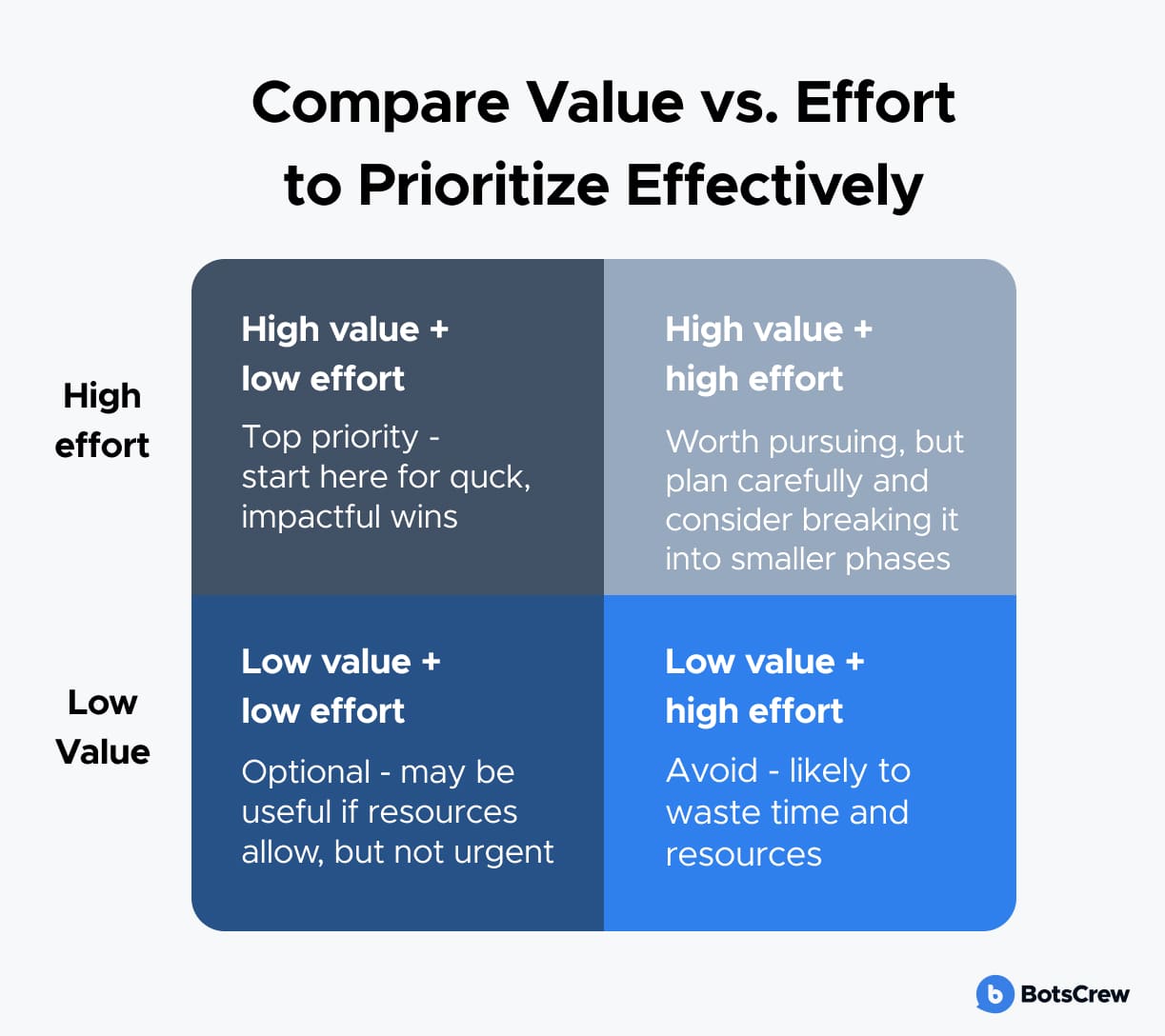
This approach ensures your AI initiatives focus on where automation delivers the most meaningful results while considering technical feasibility.
Ready to see what AI can do for your business?
Step 4: Prioritize High-Value Clusters
Once a set of use cases has been identified and assessed, you still have to make sure you focus on those most relevant — after all, the potential applications of AI are endless.
Typically, there is a first round of rough AI use case assessment and AI use case prioritization, followed by:
- A deep dive into the most promising-looking cases
- A second round of review and AI use case prioritization.
Additional issues to consider:
— High-value cases are often complex. Break them into smaller, viable increments and tackle them iteratively along an agile roadmap.
— Technological interdependencies exist. Clustering related use cases can speed up implementation, reduce risk, and simplify scaling.
Furthermore, it is critical to define:
- What scale (of possibly interacting AI applications) is required to derive value?
- Over what time period is the value derived?
- What dynamic changes does the application need to adapt to?
- What degree of maintenance is needed?
Forgetting to answer these questions is a standard value-destruction trap.
Prioritize clusters that have a large number of high-value use cases, and at least some use cases that are relatively easy to implement within a previously determined timeframe. Within the prioritized clusters, pick 1 or 2 cases for validation. Ideally, you should deal with 3 to 6 cases in one wave.
Good candidates can have different characteristics:
- Quick wins (fast to implement, immediate ROI)
- High strategic value or marketing relevance
- Scalability to other products or processes.
These clusters should become the base for building your use case roadmap.
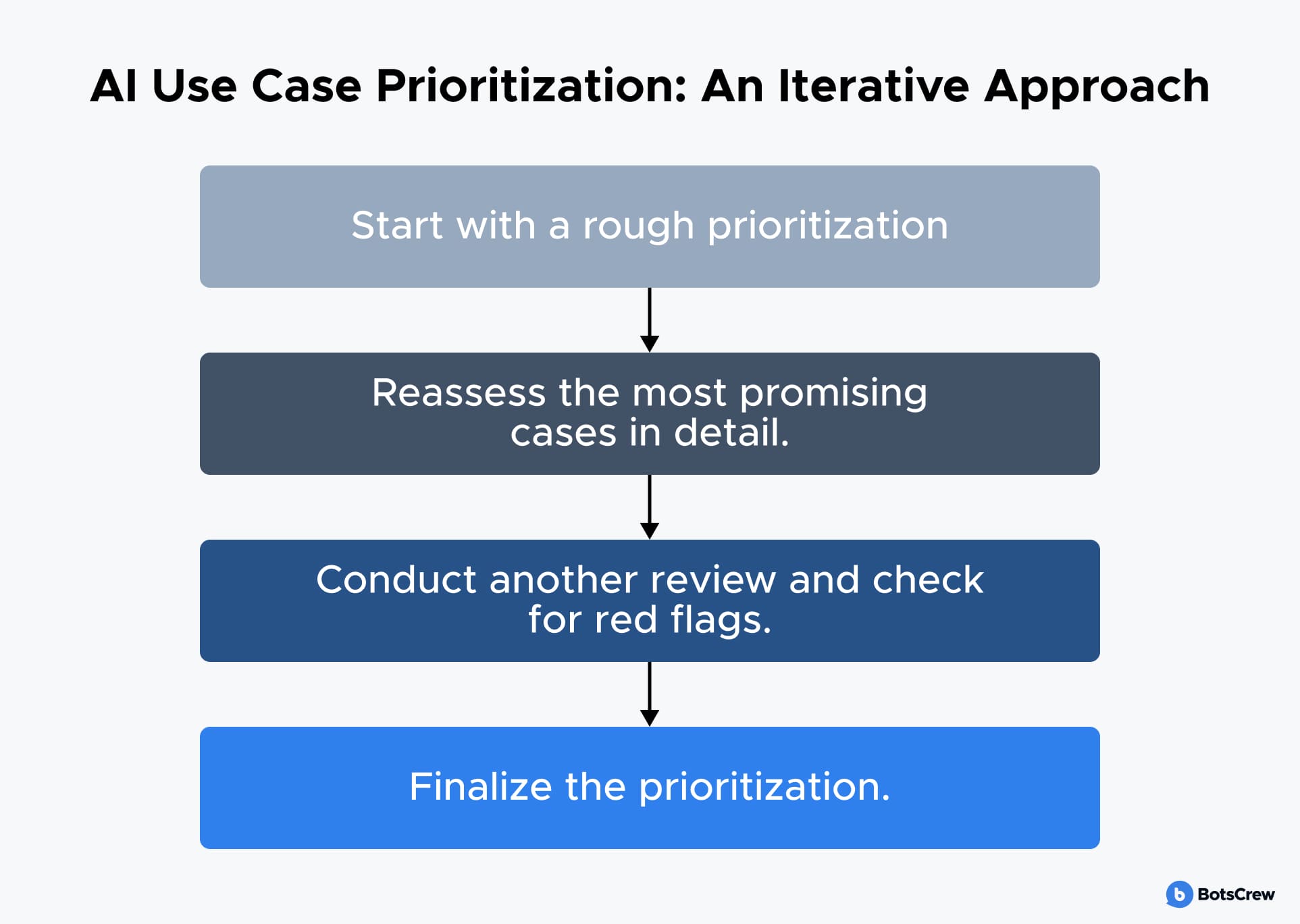
Step 5: Decide on Make-or-Buy Strategy
One key factor influencing the value and the feasibility of AI use cases is the make-or-buy decision — whether to develop AI capabilities internally, partner with a vendor, or buy an off-the-shelf solution. This decision has several layers:
— Data access and governance. External vendors may need access to sensitive internal data to train models, raising questions about confidentiality, IP ownership, and compliance.
— Cost vs. speed. Building in-house can provide long-term control but may delay time-to-market. Partnering or buying pre-trained models can accelerate implementation, but may require ongoing vendor dependency.
— Maintenance and evolution. AI models require continuous updates as data and environments change. Consider whether your organization or the vendor is better positioned to maintain performance over time.
— Contracting and collaboration. Clearly define deliverables, performance guarantees, retraining responsibilities, and security requirements in vendor agreements.
Careful analysis of these factors ensures that make-or-buy decisions support long-term business goals, rather than creating hidden risks or dependencies.
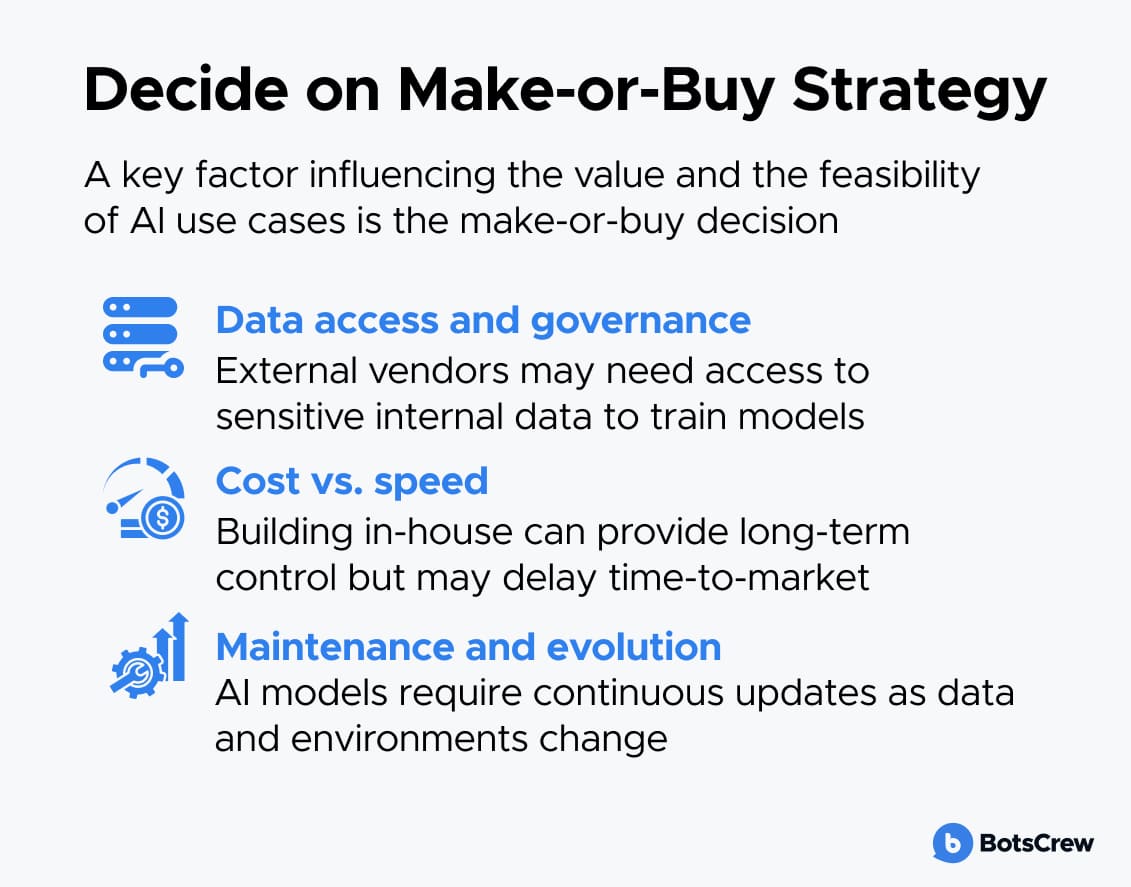
Step 6: Set AI Flags
There are some AI flags that should be set at this stage:
— Regulatory and/or ethics. This is primarily relevant when sensitive people-related data and/or decisions are involved. For instance, a regulatory authority might require transparency of the algorithmic decision-making — often in terms of outdated metrics stemming from rule-based decision systems. Or there might be some legal or consumer-driven "fairness" expectations (often with only vaguely defined criteria).
Since AI-based decisions can happen at unprecedented speed and scale, while at the same time everything is measured, such topics can become of enormous importance and need to be flagged in a generative AI opportunity assessment.
— Risk and transparency. There is a wide range of further risks that need to at least be documented in the gen AI opportunity assessment.
— Cybersecurity. Most executives think of data security, but automating with AI introduces a new quality of risk: process security (hackers have famously demonstrated the takeover of an autonomous car to make such a risk tangible). High-risk areas thus require an extra cybersecurity flag.
Step 7: Run Your First AI Pilot
Now you are ready to move from planning to action. Start with a 4–6 week AI pilot focused on a single high-impact use case — for instance, automating report generation, improving customer support with a chatbot, or streamlining demand forecasting. As you roll out the pilot:
- Set clear success metrics (e.g., time saved, response accuracy, cost reduction).
- Monitor performance in real time and gather feedback from end users.
- Iterate quickly, fine-tuning prompts, models, or integrations based on what works.
Once the pilot proves its value, scale up by expanding to additional workflows or departments. The goal is to turn AI from a concept into a practical, measurable driver of efficiency and growth. Keep humans in the loop for quality control and decision-making, especially in processes where errors could be costly or damage customer trust.
Ready to Find the Right AI Use Case for Your Product?
AI can be a game-changer — streamlining operations, enhancing user experience, and enabling entirely new product features. But with so many possibilities, figuring out where to start can feel overwhelming.
That's where our AI Discovery Phase comes in. We work with you to uncover high-impact, practical use cases that align with your product vision, minimize risk, and give you a clear roadmap from idea to implementation. BotsCrew helps you focus on the opportunities to deliver measurable results, avoid wasted investment, and build solutions that earn stakeholder and customer trust.
Take the first step today. Turn AI from a buzzword into a competitive advantage. Book your AI Discovery Session and get a tailored plan for your first pilot — from business case validation to full-scale deployment.




